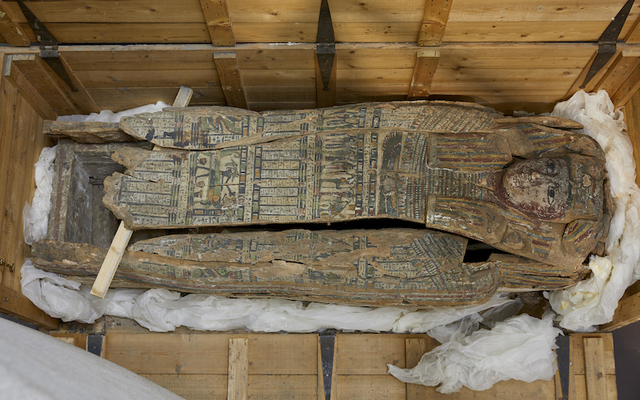University College Cork has confirmed the return of several historical objects, including a mummified human remains and a sarcophagus, to Egypt.
The objects, which come from UCC's Heritage Collection, are part of a previously announced donation to the Egyptian State.
According to the university, the items include mummified human remains, a sarcophagus, a set of four Canopic jars, and a set of cartonnage (coverings) dating variously from about 500 AD to about 945 BCE.
The accessioning of the donation is ongoing, with the process expected to formally conclude in 2025.
The donation is a multi-agency collaboration involving the University, the National Museum of Ireland, the Egyptian Ministry for Tourism and Antiquities, the Irish Department of Foreign Affairs, and Embassy staff in Dublin and Cairo.
“We are pleased to confirm this significant development in the ongoing donation process. I wish to thank both embassies in Dublin and Cairo, the National Museum of Ireland, the Egyptian Ministry for Tourism and Antiquities, and the Department of Foreign Affairs for their collaboration," said UCC President John O’Halloran,
"I wish to express particular thanks to Mark Poland, UCC Director of Buildings and Estates, Margaret Lantry, UCC Curator, and John FitzGerald for their hard work in bringing the process to this point.”
The wooden sarcophagus, which analysis dates back to approximately 625 to 600 BCE, is made of wood, probably sycamore, applied with plaster and decorated with pigment.
An inscription indicates that it belonged to a man named Hor. Painted decorations on the lid and sides depict the procession of the gods to the table of offerings where the deceased, Hor, is presented by Thoth, the Egyptian God of writing, wisdom and magic. Other illustrations depict gods and goddesses, while inscriptions pray that Hor will have eternal life with the gods, happiness, and plenty of food and drink.
The coffin was excavated by Ernesto Schiaparelli sometime between 1903 and 1904, from tombs in the Valley of the Queens. It is possible, though unconfirmed, that it was subsequently sold at the Salle de Vente in the Egyptian Museum in Cairo.
The mummified human remains are that of an adult male, estimated to be between 45 and 50 years old and measure 1.69m. The remains are not that of Hor, to whom the sarcophagus belonged. Testing done on the wrapping of the remains date it at around 305 BCE to 500AD, meaning the sarcophagus pre-dates the human remains by several centuries.
The sarcophagus and mummified human remains were donated to the university.
The four Canopic jars were purchased by UCC from the firm of J.E. and E.K. Preston, Antiquaries and Dealers in Works of Art in Harrogate, Yorkshire, England sometime between 1911 and 1912. The jars were purchased for £9, according to records. These are believed to be the oldest of all the items being returned to the Egyptian State, with an estimated date of between 945 and 700 BCE.
The set of cartonnage pieces in UCC’s collection are made of linen, plaster, and paint and date earlier than 100 AD. Cartonnage were placed on mummified remains at the time of burial. The set in UCC comprises of a chest covering, a lower body covering, a foot case and a head covering. It is not clear if these pieces are from the same original set. No records exist detailing the provenance of the set of cartonnage.




Comments